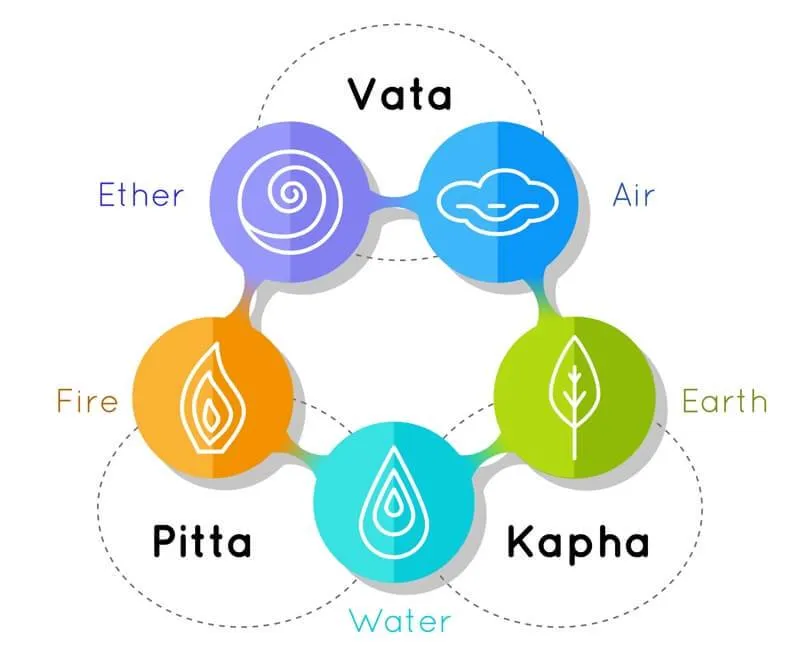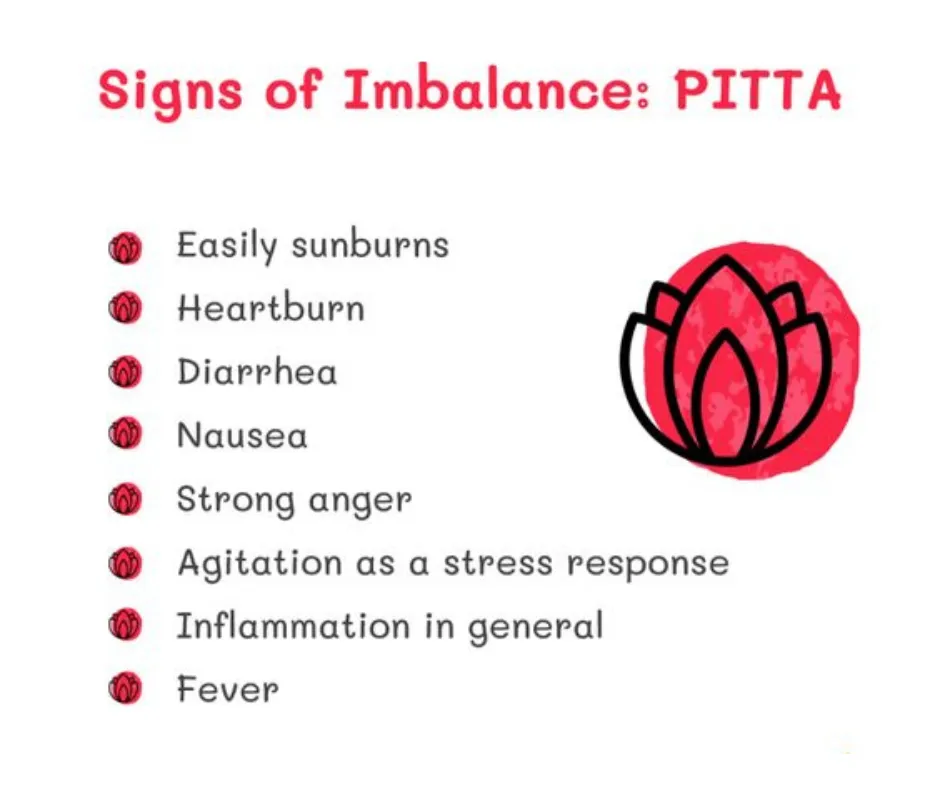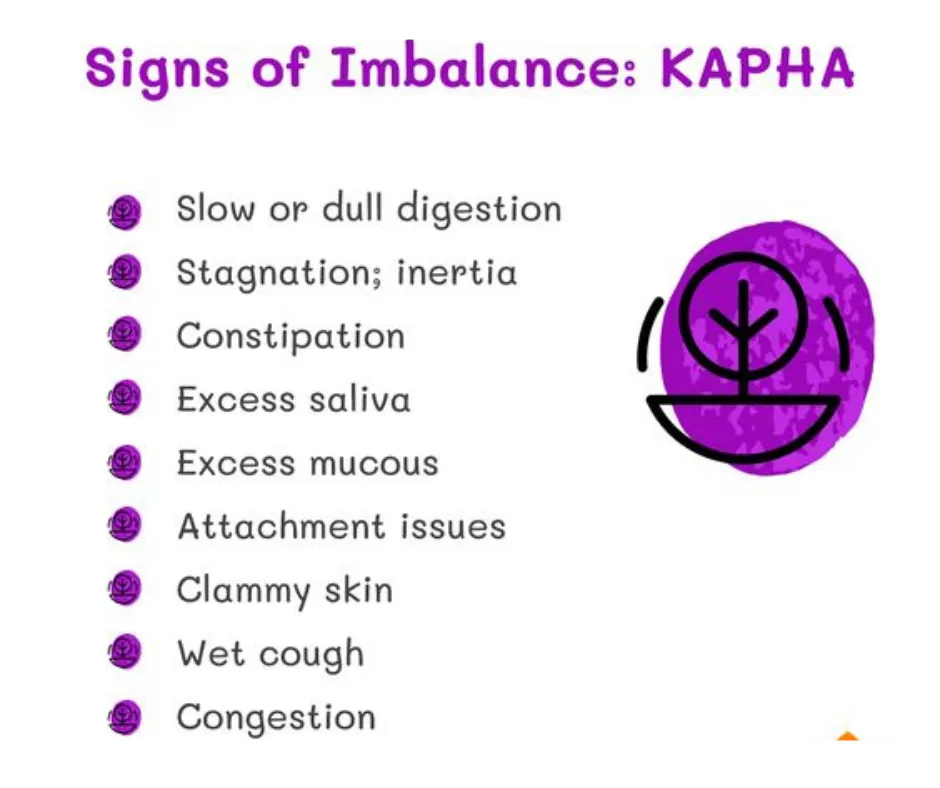
I still remember when I first went to Rishikesh. One of the teachers, just after speaking to me for 5 minutes, started to tell me everything about me — my health issues, how I think, the foods I like, etc. That was the first time I met him! I was completely shocked and thought he had got this siddhi (power) because of his sadhana (spiritual practice).
Later, when I started to understand Ayurveda, especially Vata, Pitta & Kapha, I understood it wasn’t any magic power, but science. Just by learning and practicing this concept of Ayurveda, you can also amaze others with your insights.
Now let’s understand what is Vata, Pitta, and Kapha.
According to Ayurveda, the ancient Indian system of natural healing, every person has a unique mind-body constitution called ‘Prakriti’. This Prakriti is determined by three main energies called ‘doshas’ — Vata, Pitta and Kapha. These doshas come from the five basic elements of nature — air, fire, water, earth and space. Knowing which dosha is most dominant in your body is the key to staying healthy
Vata Dosha — The Force of Movement (Air & Ether)
Vata governs all movement and activities in the mind and body. It controls the other two doshas and is the motivating vital force behind respiration, circulation, elimination, neurotransmission, and musculoskeletal activities.
Individuals with a predominant Vata constitution tend to have a lean, light frame with protruding features like veins and tendons. Physical attributes include dryness, roughness, quick movements, cracking joints, variable appetite, and irregular routine. Their bodies lack insulating body fat, making them intolerant to cold, wind and dryness.
Mentally, Vatas are imaginative, quick-learners but can be restless, and anxious and struggle with decision-making due to their mercurial nature. They thrive on novelty but have a hard time staying grounded. Their sleep is often disturbed.
To pacify aggravated Vata, their diet should emphasize warm, grounding, nourishing, and stabilizing foods like soups, stews, healthy fats, and oils. Lifestyle practices that promote grounding like mild exercise, meditation, and self-massages with warm oils are recommended.

Pitta Dosha — The Force of Digestion/Metabolism (Fire)
Pitta represents the energy of digestion, assimilation, nutrition, metabolism, and body temperature regulation. It governs transformations in the body-mind complex through enzymes and hormones.
Physically, Pitta individuals have a medium, athletic build with good musculature and metabolism. Their skin has a reddish tint and they have excellent appetite and digestive power. However, they are also prone to inflammation, rashes, acidity, loose stools, and excessive body heat.
Mentally, they are intense, intelligent, and driven by purpose but can also be short-tempered, impatient and judgmental at times. Their competitive spirit and perfectionism serve them well professionally.
When aggravated, Pittas should favor cooling, energy-pacifying foods like bitter greens, sweet fruits and milk products. Relaxing practices like yoga, pranayama (breathwork) and spending time in nature are beneficial.

Kapha Dosha — The Force of Stability/Lubrication (Water & Earth)
Kapha represents the watery elements that provide biological stamina, lubrication, supportive structure and cohesion in the body. It governs growth, joint mobility, muscle development and bodily bulk/weight.
Physically, Kapha-predominant individuals tend to have a heavier, more solid build with excellent strength and endurance. They have smooth skin, thick hair, good musculature and energy reserves. However, they can also struggle with weight gain, inertia, sinus issues and feeling heavy or dull.
Mentally, Kaphas are naturally calm, grounded, nurturing and forgiving with good memory power. But they can also be possessive, stubborn and resistant to change if imbalanced.
To pacify aggravated Kapha, they need a diet and lifestyle that is invigorating — favoring warm, light, drying foods and regular exercise. Stimulating practices like alternate nostril breathing and invigorating yoga are recommended.

Most people have a combination of two doshas that define their Prakriti, while only a rare few have all three doshas in perfect equilibrium. Ayurveda recommends making appropriate dietary and lifestyle choices to maintain the balance of one’s unique doshic proportion for lasting wellness and vitality.